Between Lucca and Pistoia, the Val di Nievole is a gentle region full of small treasures and gardens, from its spas to its natural areas, with lush hills, woods of chestnut and olive trees, dotted with parks, villas and castles.
The magic of the place comes in large part from the land of Pinocchio, Collodi being the birthplace of Carlo Lorenzini’s mother. The creator of the famous puppet’s tale adopted the name of this village as a pen name.
Many artists loved and still love to find themselves in this region, like musicians such as Verdi or Puccini, painters and writers. Some came to relax thanks to the thermal waters of Montecatini Terme, a city rich in its Art Nouveau architecture, or in the steam caves of Monsummano Terme. In the plain, where today is the natural reserve of the Fucecchio marshes, 120,000 years ago the sea stretched to the mountain of Montalbano.
Among other things, the Val di Nievole produces shrubs (such as bonsai and citrus fruits in Pescia), olive oil IGP, wines, the vinsanto and several delicious cookies.
Tourist map of Val di Nievole
If you see this after your page is loaded completely, leafletJS files are missing.
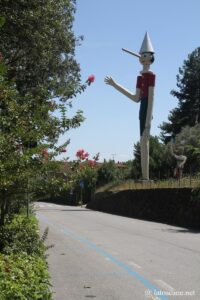
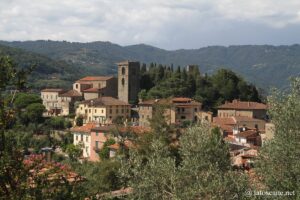
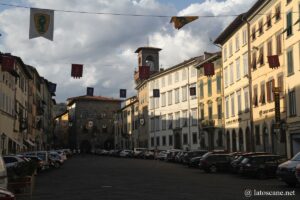
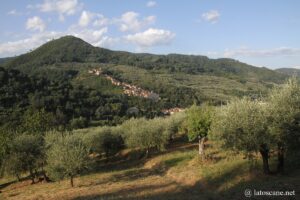
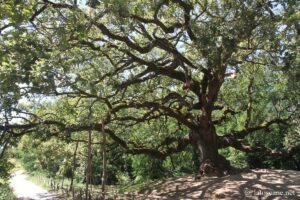
Collodi
Collodi is an enchanting village that evokes the magic of Pinocchio’s story with its fairytale park. On the other hand, the allure of the village itself seems to be taken from a fairy tale, where houses are built on the slope of the hill, seemingly piling up in a staircase that rests on the castle of the gracious Villa Garzoni. The latter was built on the ruins of the old medieval castle.
The village dates back to the Middle Ages, taking advantage of a strategic position, and whose history was marked by the family Garzoni. Opposed to the Florentines, she had to emigrate to Lucca when Florence seized Collodi in 1339. The village preserves old stone houses and medieval alleys. The fortress keeps its walls and towers, with at the top the church of the Pieve di San Bartolomeo.
In Collodi you can visit the Villa Garzoni and its Italian garden with fountains and sculptures, where the father of Carlo Lorenzini, the creator of the fable of Pinocchio, worked as a gardener.
In the Pinocchio Park you can discover incarnations of the characters from the tale such as the fairy and the whale. This «land of toys» invites children to have fun and discover the world of fairy tales.
The Butterfly House is a butterfly house where over 1,000 species of butterflies from around the world live in the greenhouse.
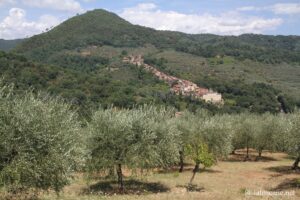
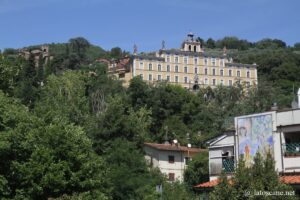
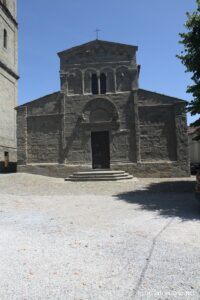
About 2 km from Collodi, Capannori is a picturesque village whose Pieve di San Genaro was already known in the 10th century, probably founded in the 6th. It underwent many redesigns, but keep beautiful decorations of the XIe-XIIIe, with first beautiful elements in facade.
The interior retains on the left side the oldest capitals with their interesting varied and geometric motifs, a pulpit of 1162, while the central apse dates from the seventeenth century.
It contains a terracotta statue of the archangel Gabriel, recently attributed with high probability to Leonardo da Vinci.
Pinocchio’s Oak
This oak is a legendary tree of the Piana di Lucca (the Plain of Lucca), almost 600 years old, located on the estate of the Villa Carrara in Capannori. This monumental tree exceeds 20 meters in height. It is especially astonishingly wide, with a trunk of 4 meters in diameter and especially the diameter of the foliage of 40 meters carried by its tortuous branches.
In autumn it emerges from a huge golden carpet, in winter it evokes the skeleton of a fantastic monster, and in summer its shadow becomes a shelter of freshness.
Its size and shapes evoke magic and legends, it is also called the Witch’s Oak. It would be the tree called the “Great Oak” that appears in a scene from the adventures of Pinocchio.
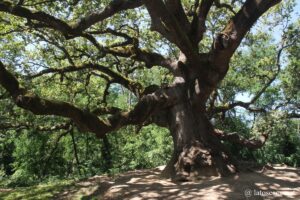
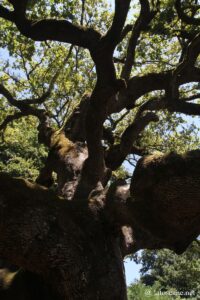

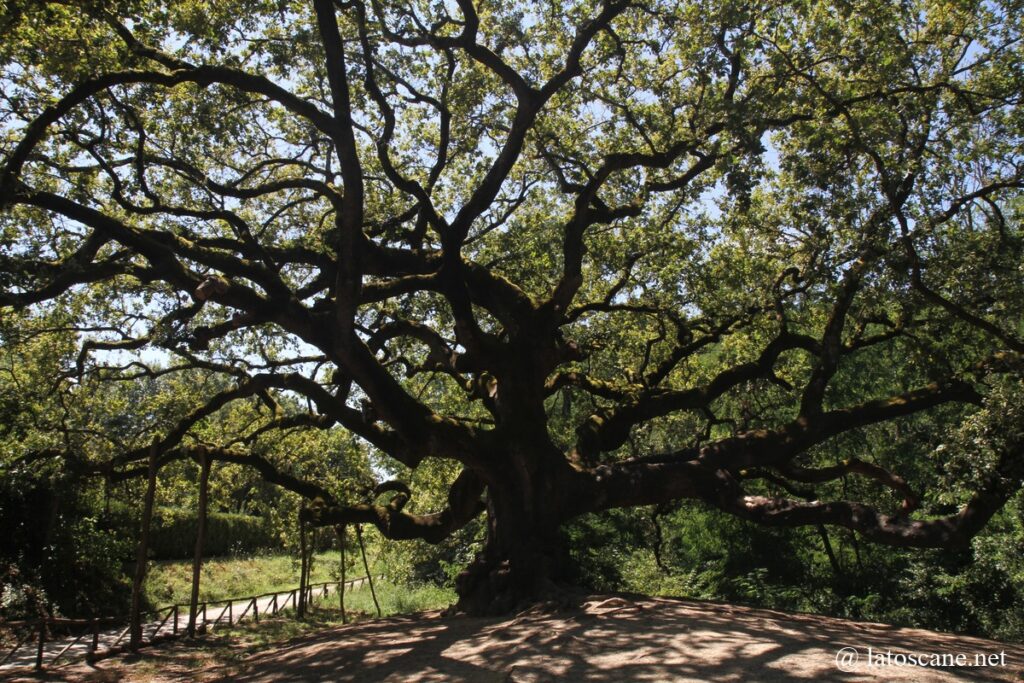
Montecarlo in Tuscany
Another Montecarlo is in Tuscany. It is not Monaco, but a small medieval village famous for its wine, located in the Plain of Lucca, east of the latter, in a landscape of hills and vineyards. Charles IV, the emperor of the Holy Roman Empire in the 14th century, founded Montecarlo after having driven out the Pisans from Lucca.
It is located on top of a hill, where its beautiful brick walls of 800 meters long still protect the historic center, with the inner side of the houses adjoining the enclosure. It is dominated by the Fortress of Cerruglio (14th and 16th centuries). It is a beautiful triangular structure with its keep and two square towers, maintaining its path round, accessible by a drawbridge, with a garden of orange trees, lemon trees and roses.
There are three old gates leading to the town, including the Porta Fiorentina which is the main one with the road leading to Florence. In the historical centre you can see the Collegiate of Sant’Andrea, built in the 14th century and rebuilt in the 18th.
3 km in the plain, the church of the Pieve di San Piero is a beautiful building dating back to the 8th century, rebuilt in the 12th century with its current appearance. We see original sculptural elements in the facade including heads or a winged animal. The interior is vast with two colonnades whose capitals are decorated with geometric, plant and animal elements.
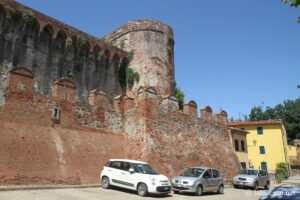
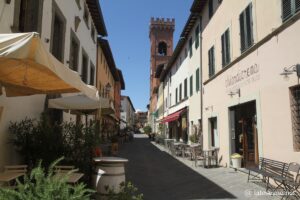
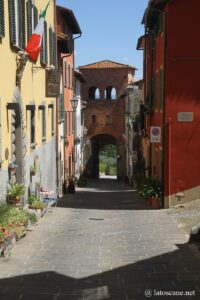
Pescia
Called the “city of flowers”, Pescia is a historic village in the centre of the “Svizzera Pesciatina”, today partly inhabited by arboriculture. It was originally a fortress, conquered by Florence in 1339 that expelled Lucca.
It was a flourishing city that profited from its river with silk factories, paper mills and tanneries. This stream divides the city into two districts, the Cathedral in the east and the Palazzo Comunale in the west.
Pescia also has two original museums, with the Bonsai Museum and the Citrus Garden (Giardino degli Agrumi in Italian).
Dating back to the 6th century, the Cathedral of Santa Maria Assunta was rebuilt in the 17th century, whose 14th-century bell tower was probably an old fortified tower. It preserves the 18th century Nativity of the Virgin by Giuseppe Bottani or the Madonna with baldachin by Pier Dandini, which is a copy of that of Raphael.
The Church of Santa Chiara is associated with the Clarisse convent, which retains a beautiful cloister. Other interesting churches intersect in the centre, including the church and Convent of San Francesco.
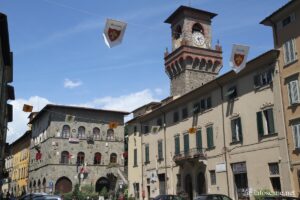
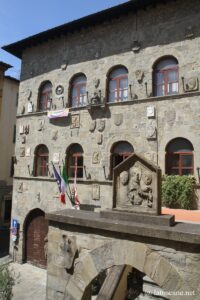
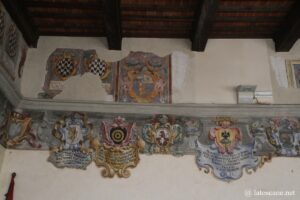
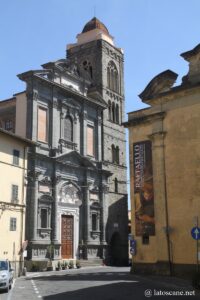
Montecatini
Montecatini Terme is a spa town renowned for its mineral-rich therapeutic springs and beautiful Art Nouveau architecture.
Many personalities came to recharge their batteries in the 19th century, and in 2021 Unesco listed Montecatini among the major spa cities of Europe, counting 11 cities from 7 countries.
The spas are set in beautiful parks, with thermal pool fed by 33° spring water.
The Palazzo Comunale is home to an exhibition space dedicated to contemporary art.
You can reach Montecatini Alto by funicular railway, for example. It is a medieval village associated with its castle. In 1554 the Florentines of Cosimo I de’ Medici demolished the enclosure.
At the top is the Rocca with the Torre del Mastio, near the Saint Peter’s Church which dates back to at least the 8th century and was rebuilt in the 18th century. The centre of the village is Piazza Giusti with its bars and restaurants. There are buildings of medieval origin such as the Palazzo del Podestà and its charming loggia.
On another summit to the south of the town, the Torre del Carmine or Clock Tower dates back to the 12th century. It is one of the 6 surviving towers of the 25 that were built before the siege of 1554. An image from 1552 shows the tower with a “Roman clock” so a similar dial was installed with 6 hours.
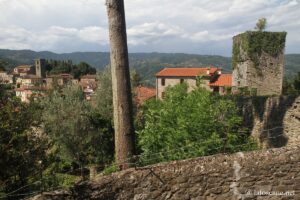
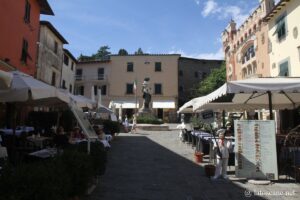
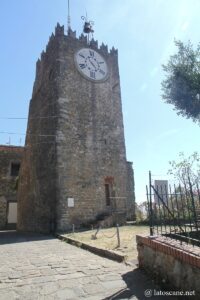
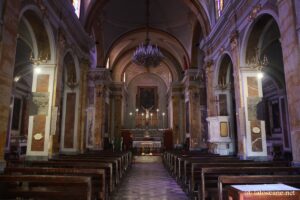
Monsummano Terme
Monsummano is known for its rich hot springs fed by its warm waters. In addition to these sources, the Grotta Giusti is a spectacular natural cave also known for its therapeutic effects of steam emanations.
At the foot of Monsummano Alto, where there are remains of the ancient city, the heart of the city of Monsumano Terme was commanded by the grand duke Ferdinand I de’ Medici in the early seventeenth century.
Uzzano
Uzzano is a medieval village with several hamlets on the hills near Pescia. Puccini stayed for several months in the Villa del Castellaccio (Villa Anzilotti) open on occasion.
In the medieval historic centre, besides the medieval castle perched in a dominant position, the 13th-century church is interesting, preserving a Romanesque holy water and a 16th-century statue attributed to the sculptor Giovanni Della Robbia.
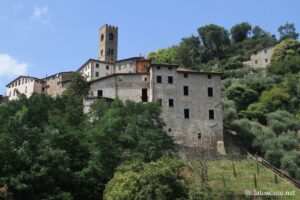
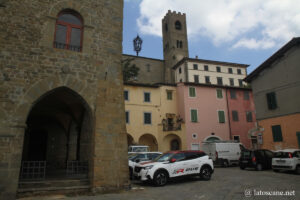
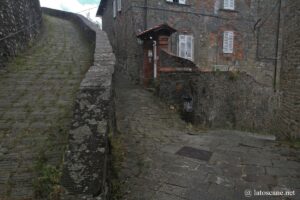
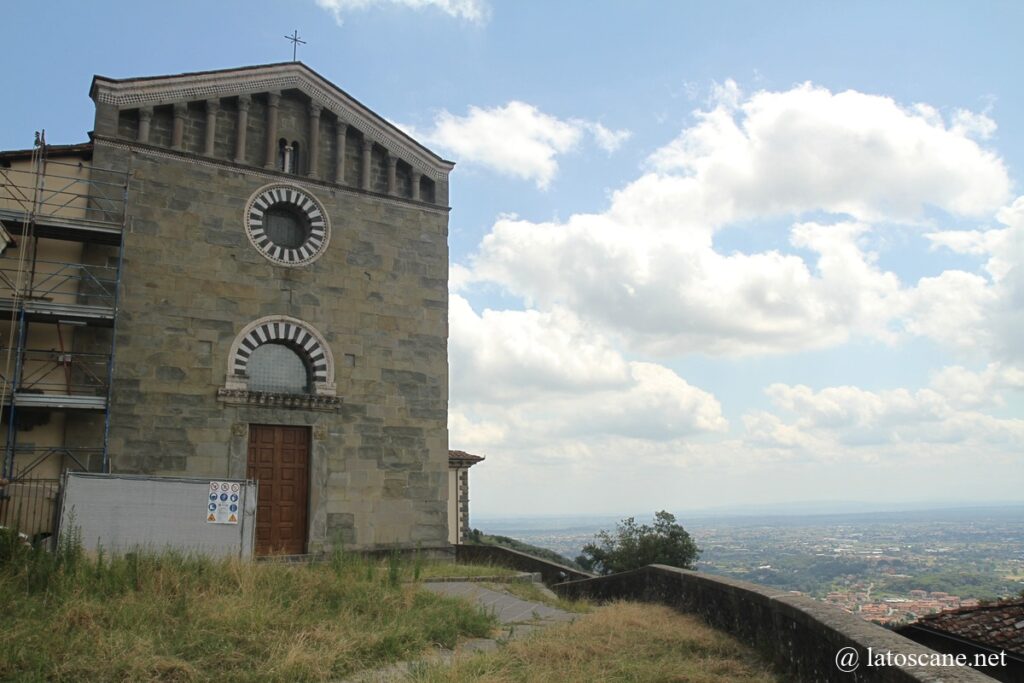
Villa Torrigiani
In Camigliano, the Villa Torrigiani is one of the most beautiful palaces in Tuscany, with its park listed among the “most beautiful parks in Italy” thanks to romantic garden gift, including pools, water games and caves.
It dates back to the early 16th century when it was built by the Buonvisi family. In the seventeenth century, Nicolao Santini, ambassador of the Republic of Lucca near Louis XIV in France, conferred splendour on the place with very beautiful garden.
It is the garden-theater of Flora with caves and water games, monumental trees, ancient camellias, citrus fruits, flowerbeds, a chapel, fountains and statues, Viale dei Cipressi and the Borgo Parigi.
The interior of the palace preserves 18th-century furniture and frescoed rooms by Pietro Scorzini from the 17th century.
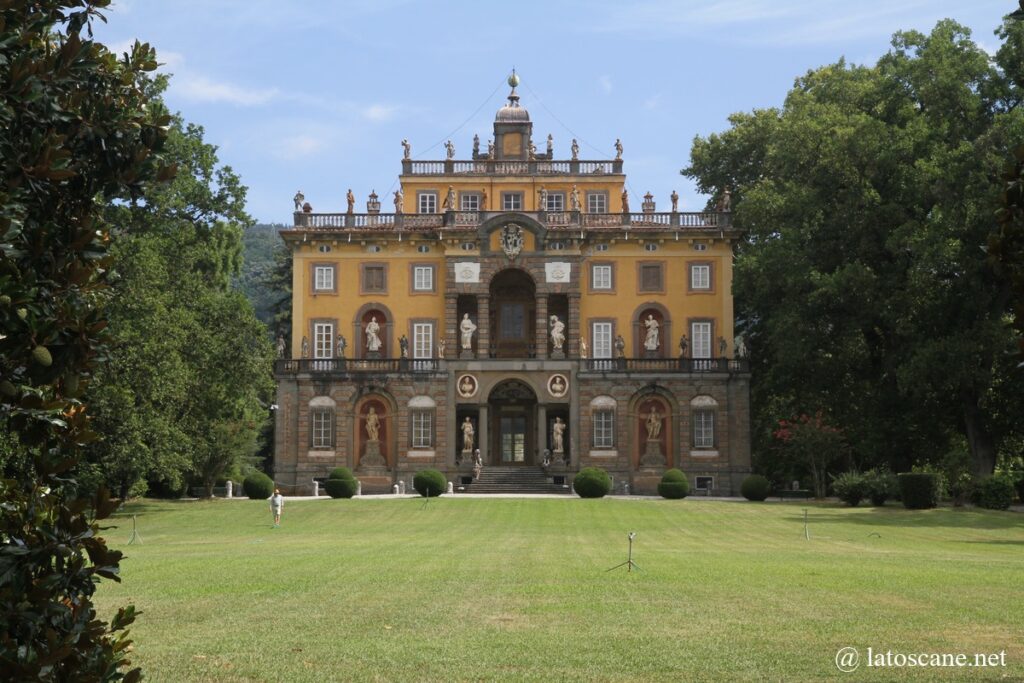
Proposal for guided tours and other activities
Sources and links
- Val di Nievole : Val di Nievole on www.visittuscany.com, sur en.wikipedia.org
- Collodi : Collodi on en.wikipedia.org, Collodi on www.visittuscany.com
- Montecatini : Montecatini on www.visittuscany.com
- Pescia : Pescia on www.visittuscany.com
- Pinocchio in Tuscany :Pinocchio on www.visittuscany.com


No Comments Yet